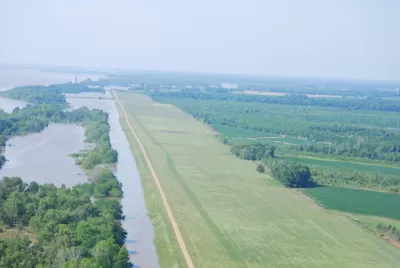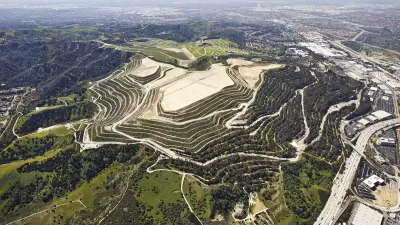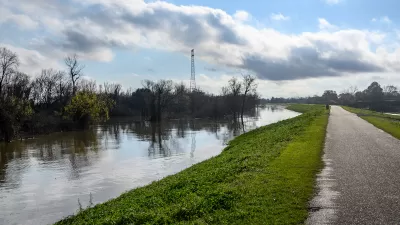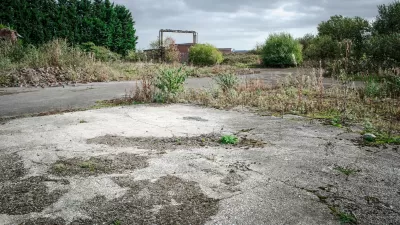Thirty years following the start of a project designed to build back land that was slowly being lost to the Gulf of Mexico, Louisiana is celebrating a rare success.

Todd Masson of the New Orleans Times-Picayunereports that a project launched in 1986 by the Louisiana Department of Wildlife and Fisheries continues to exceed expectations in new land creation in southern Louisiana. The Louisiana Crevasse Project involved cutting holes into natural levees in the Pass a Loutre Wildlife Management Area to allow sediment from the Mississippi River to flow into the sinking marshland. Since then, the department has been stunned by the ongoing land creation which may be a model for how the state can claw back land that has rapidly been sinking into the Gulf of Mexico.
This natural process of land creation comes at virtually no cost once the cut has been made and allows for a natural gradient of marsh to form. This low-cost restoration technique is unique as it continues to build additional acreage over time rather than eroding away. It is also the cheapest land-creation technique currently in the coastal-wetland-restoration toolbox, the department said. Having a marsh slowly and naturally recreate itself with varying elevations allows for more diversity in the species that use the habitat.
FULL STORY: Cutting holes in levees has created more land than expected south of Venice

Study: Maui’s Plan to Convert Vacation Rentals to Long-Term Housing Could Cause Nearly $1 Billion Economic Loss
The plan would reduce visitor accommodation by 25,% resulting in 1,900 jobs lost.

North Texas Transit Leaders Tout Benefits of TOD for Growing Region
At a summit focused on transit-oriented development, policymakers discussed how North Texas’ expanded light rail system can serve as a tool for economic growth.

Why Should We Subsidize Public Transportation?
Many public transit agencies face financial stress due to rising costs, declining fare revenue, and declining subsidies. Transit advocates must provide a strong business case for increasing public transit funding.

How to Make US Trains Faster
Changes to boarding platforms and a switch to electric trains could improve U.S. passenger rail service without the added cost of high-speed rail.

Columbia’s Revitalized ‘Loop’ Is a Hub for Local Entrepreneurs
A focus on small businesses is helping a commercial corridor in Columbia, Missouri thrive.

Invasive Insect Threatens Minnesota’s Ash Forests
The Emerald Ash Borer is a rapidly spreading invasive pest threatening Minnesota’s ash trees, and homeowners are encouraged to plant diverse replacement species, avoid moving ash firewood, and monitor for signs of infestation.
Urban Design for Planners 1: Software Tools
This six-course series explores essential urban design concepts using open source software and equips planners with the tools they need to participate fully in the urban design process.
Planning for Universal Design
Learn the tools for implementing Universal Design in planning regulations.
City of Santa Clarita
Ascent Environmental
Institute for Housing and Urban Development Studies (IHS)
City of Grandview
Harvard GSD Executive Education
Toledo-Lucas County Plan Commissions
Salt Lake City
NYU Wagner Graduate School of Public Service





























